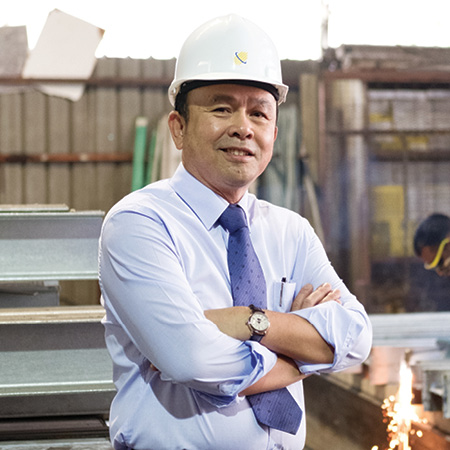“Probably the biggest challenge we have faced was in 2001,” answers Seow Seng Wei, CEO of Singapore-based construction company Teambuild Engineering & Construction, when asked to recall the most testing moments of his career. It’s easy to imagine many high-level executives in the local construction industry nodding their collective heads in agreement with his response. “After 9/11, construction activities and demand just dropped at such a rapid pace.
The work dried up and many, many contractors went bust,” he replies. When faced with an equally gloomy outlook, he recalls, pay cuts taken by senior management, combined with the collective mindset of his team to survive, kept the company afloat, along with just a small dash of initiative.
Creating opportunity
“We were able to identify a new source of projects,” he says, allowing just the slightest pause for effect before revealing any more detail. “We worked with insurance companies in Singapore to complete the abandoned or unfinished works of those contractors who went bust during the 9/11 period. From there, we made a name for ourselves, and during the years that followed found ourselves receiving invitations from authorities and owners to tender for new projects.”
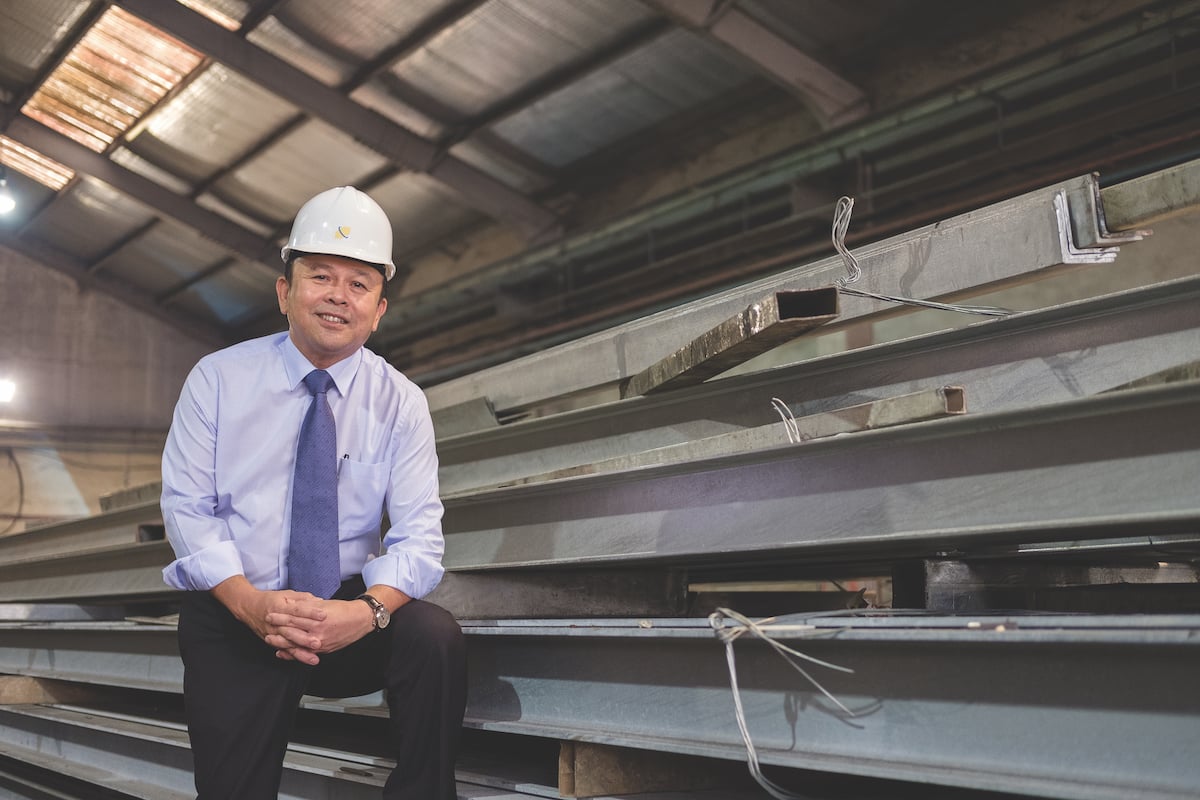
“The future for companies like ours in Singapore lies with how you can do more with fewer workers.” – Seow Seng Wei
It proved to be an unexpected masterstroke, one that sent the company on an upward growth trajectory at a time when many of its competitors were struggling to remain profitable. “It really was a matter of creating an opportunity from very little. We really focused on looking outside the box and identifying a niche for ourselves in the market,” he explains.
The sky is the limit
Only a quick glance at the Singapore skyline is required to realise that the time for generating an income from such sources has passed. Abandoned projects are now a subject confined to the history books. Although the sector has witnessed a slight downturn as a result of the country’s recent economic slowdown — preliminary estimates released in January 2017 by the Building and Construction Authority (BCA) of Singapore report a figure of S$26.1 billion for total construction demand for the year just passed, compared to S$27 billion in 2015 — the BCA predicts that public sector works will propel the industry in 2017. It projects a figure of up to S$24 billion worth of contracts to be awarded in the public space this year, a significant increase on 2016’s S$15.8 billion. Overall, the BCA forecasts the combined value of public and private construction contracts awarded in 2017 will reach between S$28 and S$35 billion, a figure it expects to be sustained through to 2021 as government spending continues to stimulate the industry. The iconic Marina Bay Sands development, completed in 2010, embodies the future of the construction industry in Singapore: thriving and innovative. The sky is the limit.
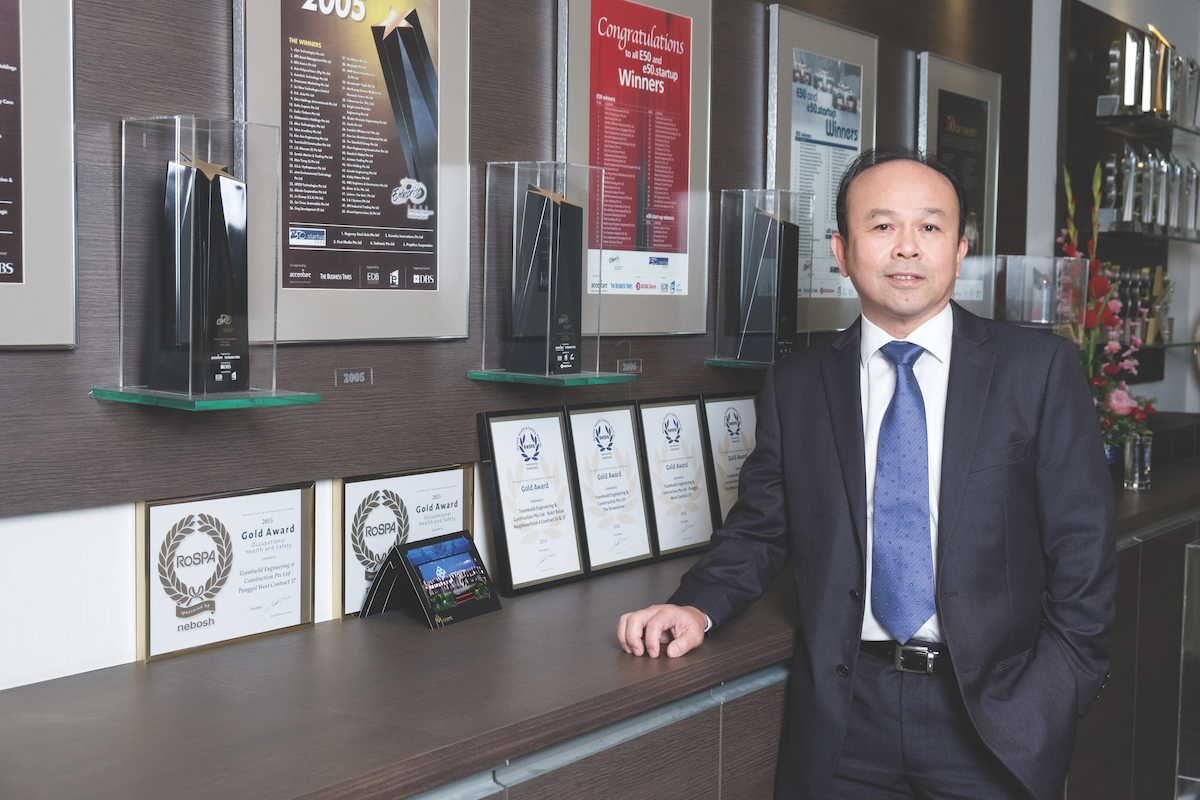
Foreign worker woes
Going forward, Seng Wei finds himself faced with a different type of challenge: one that is nonetheless difficult to navigate and requires a similar display of initiative in order to successfully surmount it. “The construction industry today is undergoing another round of consolidation. The future for companies like ours in Singapore lies with how you can do more with fewer workers,” he forecasts. Not by choice, it must be emphasised.
The fiery relationship between the Singapore government and its foreign workforce is hardly groundbreaking news. Authorities find themselves engaged in an ongoing battle: on one hand, encouraging local businesses to become less reliant on a segment of the workforce often perceived as low-skilled and low-cost, while, on the other, recognising the existence of a gap in the labour market that local talent is frequently too qualified to fill. Statistics released by the Ministry of Manpower (MOM) for 2016 reveal just how reliant Singapore’s construction industry remains on foreign labour: it accounts for one-third of the total number of work permits issued in Singapore — 326,700 of 1,009,300 permits, to be precise. Initiatives introduced by the MOM include the Dependency Ratio Ceiling, a quota set on the number of foreign workers a company is allowed to hire for every local, full-time employee. Currently, it is set at 7 for the construction industry.
Other policies include the Foreign Worker Levy, which places a monetary value, payable to the government, on every work-permit holder a company recruits. The Man-Year Entitlement regulates the percentage of foreign workers allowed on a particular construction site from what the MOM defines as ‘non-traditional source countries’ (India, Sri Lanka, Thailand, Bangladesh, Myanmar and the Philippines). Approaching the labour issue from a buildability perspective, the BCA issued in 2011 a revised mandatory Buildability Framework for all new public-sector projects, designed to encourage updated construction methods that are less reliant on manpower. To complement it, the Buildable-Design Score Index (B-Score) and Constructability Score Index (C-Score) are both prerequisite criteria to evaluate tenders. Although Seng Wei admits the industry has become significantly more regulated over the course of his career, it’s a paradigm shift that many feel is overdue.
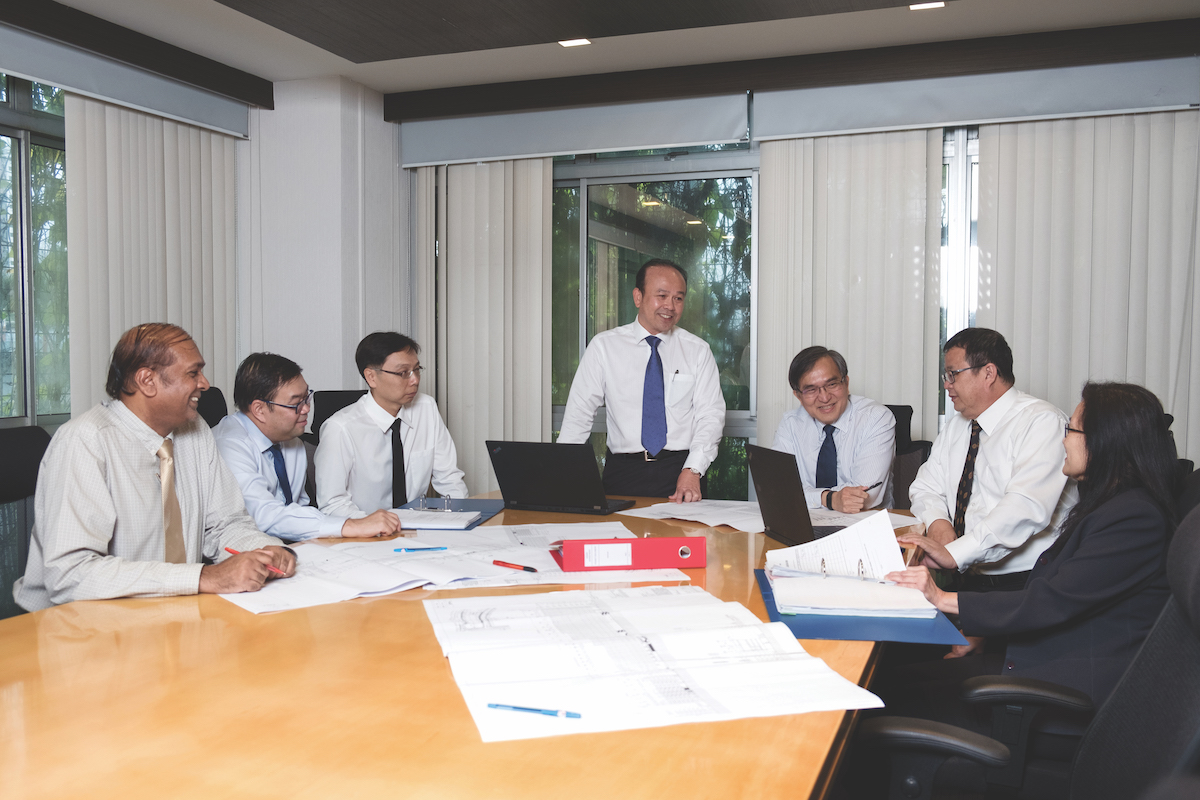
“Teambuild Engineering & Construction was one of the first companies to adopt this innovative PPVC technology, and we pride ourselves on being a market leader in it.” – Seow Seng Wei
Pioneering PPVC
Seng Wei outlines how innovation is powering Teambuild Engineering & Construction’s response to increased pressure from authorities to reduce immigrant manpower. “Over the last 3 years, we have really concentrated on implementing Prefabricated Prefinished Volumetric Construction, or PPVC, both in concrete and steel, to increase our productivity,” he says. “Teambuild Engineering & Construction was one of the first companies to adopt this innovative PPVC technology, and we pride ourselves on being a market leader in it.”
Also known as modular construction, PPVC is defined by the BCA as ‘freestanding volumetric modules, complete with finishes for walls, floors and ceilings’. Essentially, these are veritable building blocks that are assembled off site in an accredited facility and then transported to the site for installation. “The advantage is that we have much more control over the quality,” Seng Wei explains, “because the majority of the work is done in a controlled factory environment. We definitely require fewer construction workers on site and we are able to work faster. I would say that the actual construction time can be reduced by 20 to 30% by using PPVC, although it might be even faster after the technology has matured. I feel we are also able to maintain better consistency in the quality of the construction using this method.”
The innovative technology also offers health and safety benefits: not only is onsite dust and noise pollution reduced, but onsite safety improves since the bulk of the high-risk manual labour has already been completed by the time it comes to securing the foundations in place. Singapore is recognised as a global pioneer of this innovative design solution for high-rise buildings, and it is clear PPVC is destined to play an integral role in powering the country’s construction industry in the future. “We’re currently using this technology in one public and one private residential project, and based on what we’ve learned, we’re busy developing the next generation of PPVC technology,” he says. One of these is The Brownstone, an exclusive executive condominium currently in construction at Canberra Drive.
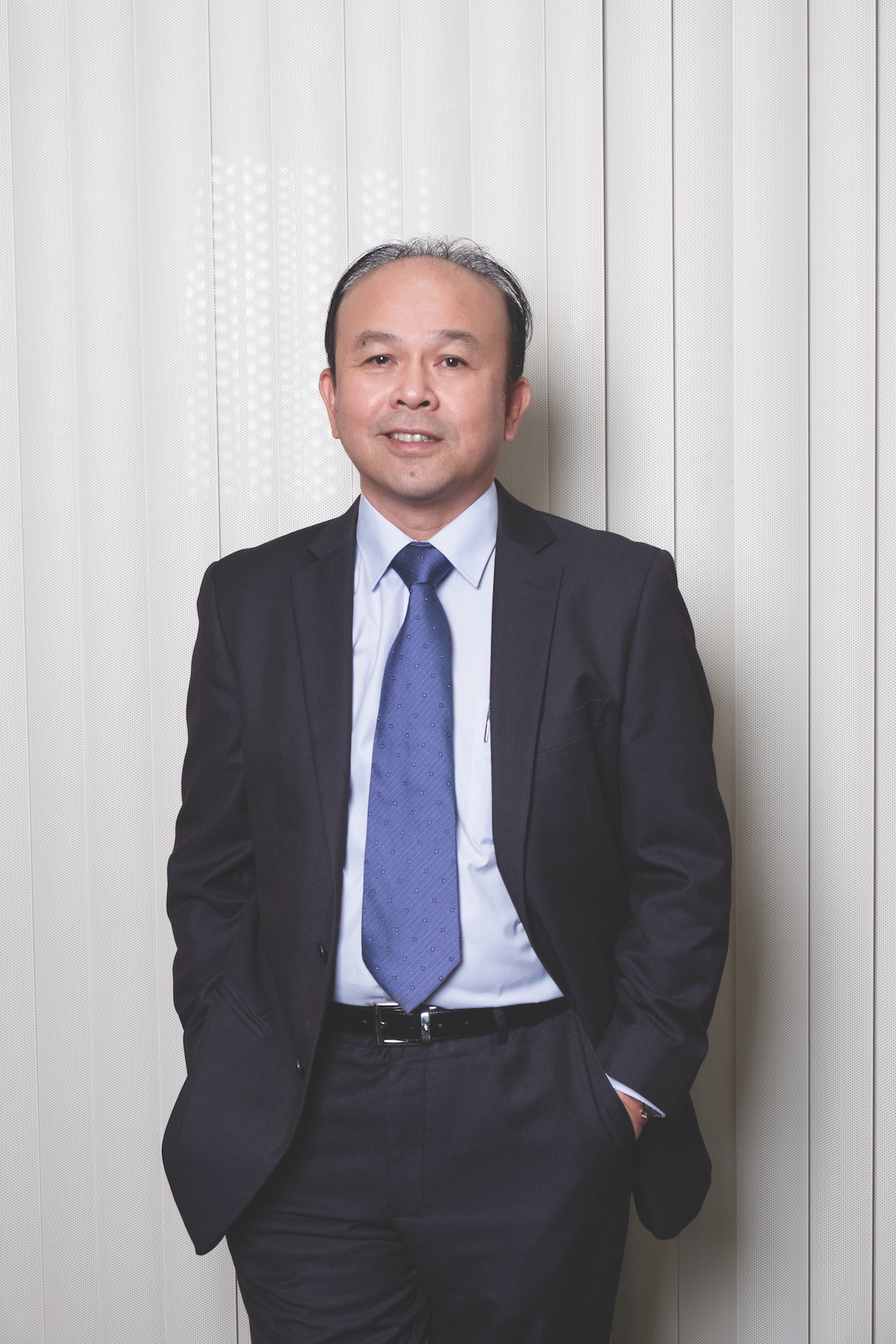
This 8 block residence of highly sought-after 2 to 5 bedroom apartments is set to be completed by early 2019 and boasts a prime location at the Canberra MRT station, currently under construction. The project has drawn a great deal of interest from BCA, the contruction industry, and other government procurement entities. “Whenever possible, we will try to propose PPVC, but it really depends on the specific requirements of the tender.”
While he acknowledges that the technology is not currently the most cost-effective solution, he urges patience. “Over the long term, I think it will be,” he predicts. “At the moment, it feels more expensive compared to more traditional methods because we’ve only just started using it.”
“When we founded the company, the industry was nowhere near as developed as it is today, and we were relying mostly on people, particularly their experience, rather than processes to manage the construction work.” – Seow Seng Wei
Early visionaries
Seng Wei has spent his career in construction and today is one of the respected executives in the industry.
A civil engineering graduate from the University of New Mexico in the US, he also holds a Master’s Degree in Project Management from the National University of Singapore. The 7 years following his studies in North America were spent cutting his teeth in a construction company in Singapore, before he decided to follow his dream. By the tender age of 30, he had established Teambuild Engineering & Construction together with a group he refers to as his friends. “The company was started in 1992 by 4 of us, friends and ex-colleagues,” he says. “Even my former boss became a shareholder and sent some upgrading projects our way, which really helped us in those first days.”
Early visionaries, this group of like-minded partners was determined to “build a professionally managed construction company,” as he phrases it. “When we founded the company, the industry was nowhere near as developed as it is today, and we were relying mostly on people, particularly their experience, rather than processes to manage the construction work. With Teambuild, the focus really was on having the right processes in place.” He admits it wasn’t easy. “It was a struggle, as there was a lot of competition and we didn’t have the greatest amount of resources to draw upon.”
Solid foundations
After 25 years, all the founding partners are still involved in the company except one (“my old boss, in fact, because his company restructured, and to avoid conflict of interest, he had to sell his shares back to us,” he explains). Teambuild Engineering & Construction has grown from a team of 2 to more than 200 today. “Initially we were relying on fairly small projects and subcontracting works,” he says, recalling those early days. “The emphasis was placed on building a solid foundation through small projects in the private sector before venturing into the world of public works. Our first project was less than S$500,000, and in that first year our revenue would have been less than S$1 million. Today it is almost S$500 million, and we have become a multidisciplinary business with our headquarters in Singapore’s industrial estate, Sungei Kadut.
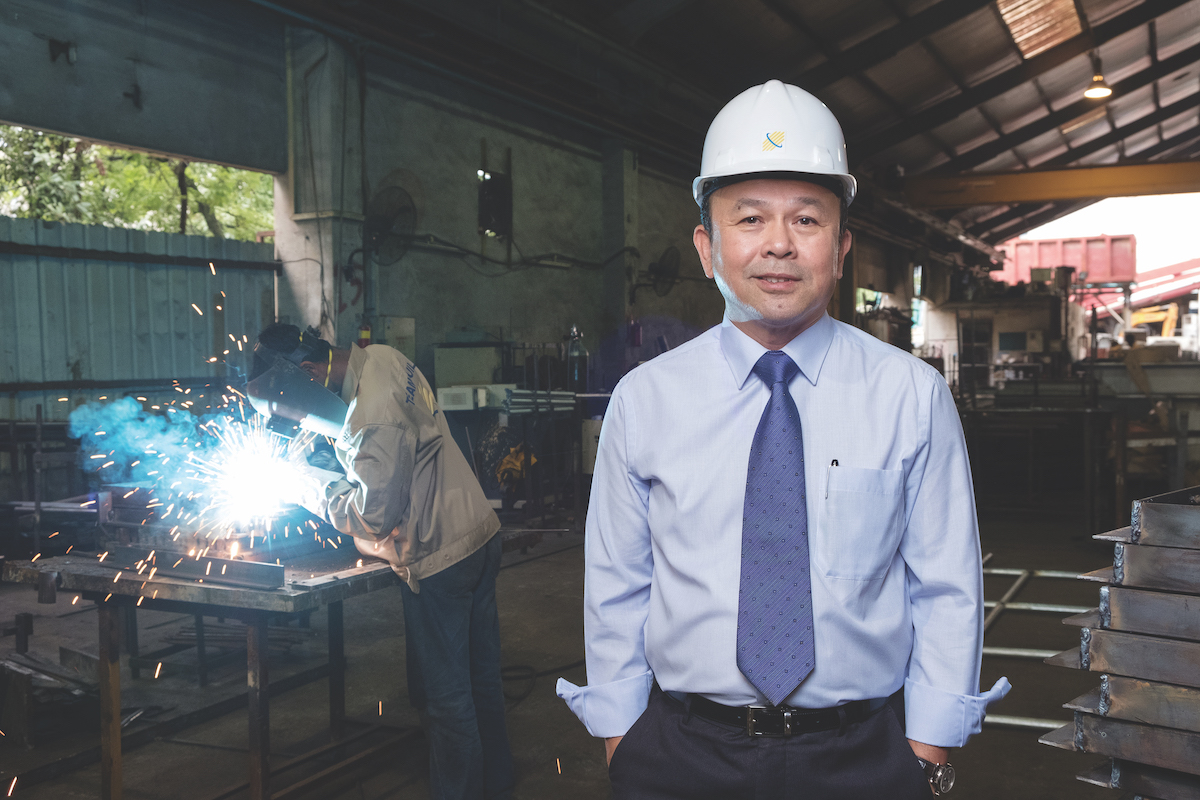
Our 12,800 square-metre purpose-built premises include a steel fabrication yard, storage, and workers’ quarters, along with a 4-storey office block,” he proudly explains.
Across the HDB portfolio
Gradual upgrades through the BCA’s Contractor Registration System have helped fuel such growth. “It has allowed us to increase the value of the public contracts we tender for,” he says. “In 2004, we upgraded the CW–01, the General Building Construction Workhead, to the financial grade A2, which enabled us to submit tenders up to the value of S$65 million,” he continues. Within 4 years, this had risen to the A1 classification, the highest financial grade. “We can now tender for public building contracts of unlimited value.” The company also holds the Civil Engineering Workhead, CW–02, grading of B2, enabling tenders for public civil engineering projects up to S$13 million. Considering that new construction and upgrading work for Singapore’s Housing and Development Board’s (HDB) public housing projects comprise the core of Teambuild Engineering & Construction’s business operations, the unlimited CW–01 A1 classification is particularly important. “Currently more than 80% of the population live in HDB housing estates,” he says, “which means being in a position to competitively tender for HDB projects is very important.”
The HDB was founded in 1960, five years before Singapore achieved complete independence from Malaysia. In an era marked by a shortage in dwellings, much of the population was reduced to living in unhygienic, slum-like conditions.
Within five years, this statutory board of the Ministry of National Development had been responsible for the construction of more than 50,000 residences. Today that number has grown to more than 1 million, 90% of which are now privately owned on 99-year lease agreements. As self-contained estates, modern HDB developments often include communal facilities, schools and commercial properties in addition to the private residences.
Teambuild Engineering & Construction’s touch can be felt across the HDB portfolio. In 2011, the company won the tender to construct the Champions Court Estate in Northern Singapore’s Woodlands district. This 8 block development comprises 815 apartments as well as shops and a restaurant. The recently completed Clementi Ridges in the south of the city saw the company responsible for the construction of 3 sky-scraping residences, each up to 40 storeys and some offering water views across the Singapore Strait. The company has also been awarded numerous HDB upgrading projects.
Competitive edge
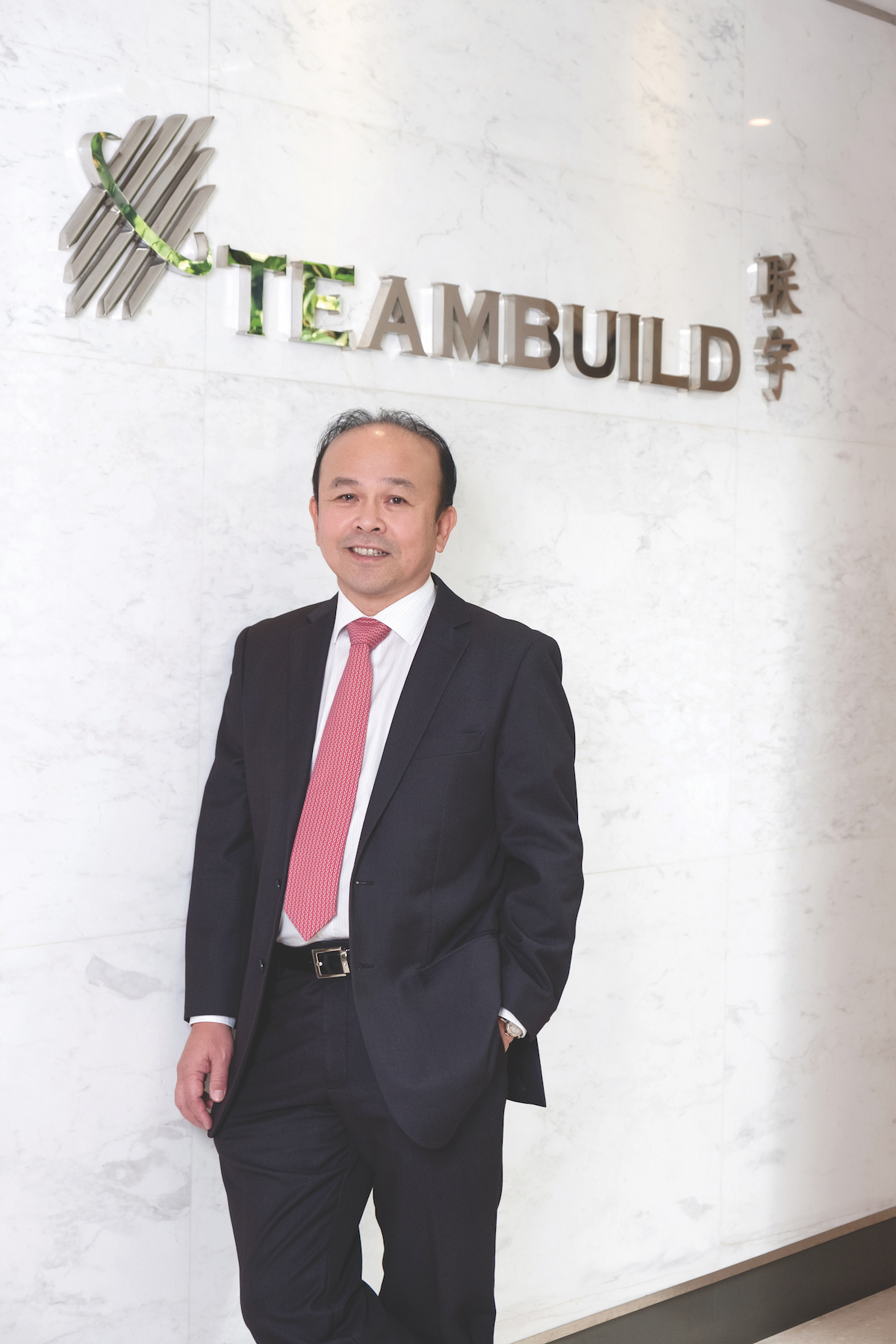
Yet the business is careful not to restrict itself solely to public sector projects. It also boasts an impressive record of delivering world-class private projects and commercial and institutional developments across the island. As the company is awarded another multimillion-dollar project, Seng Wei’s list of career highlights grows. “Each new project we win definitely becomes one of my proudest moments,” he says. He acknowledges that the tender process has played a crucial role in the company’s exponential growth.
“As with any business, when we were first starting out, word of mouth was important,” he says. “However, as we became more focused on government agency projects, tendering rather than negotiation became the norm.” He outlines his strategies for ensuring every tender the company submits is competitive. “We try to identify our niche, to see if we can offer a competitive advantage in the tender before we actually participate in it.” The company has also established what Seng Wei refers to as “our downstream offering.” He believes that these affiliated services can be the difference between winning and losing a bid. “They complement our capabilities and often give us the competitive edge in a tender process, in terms of both time and cost.”
As Teambuild Engineering & Construction has diversified into a multidisciplined construction business, it has developed expert teams in specialist areas, including steel fabrication, electrical engineering and structural work. “These downstream divisions eventually became 3 companies in their own right,” he continues. Asiabuild Engineering & Construction specialises in structural and architectural work, including the assembly of prefabricated concrete components and the erection of scaffolding; Asiabuild Metal Engineering is dedicated to steel and aluminium supply and installation; while MES Electrical Engineering is the electrical subsidiary, specialising in everything from electrical installations to communication data cabling works to state-of-the art audiovisual systems. “Our subsidiaries are encouraged to offer their services to the other main contractors in the industry as well, as it allows us to benchmark ourselves against the competition and to increase our standards and competitiveness.”
Reputation is everything
In addition to the importance of tendering for new projects, he recalls how the company in its infancy spent much energy on networking as it strived to cement a name for itself in the industry — “especially with suppliers, contractors and even financial institutions,” he says. Many of the relationships established early on are still thriving today, especially given the company’s fine reputation within the construction sector. “In this industry, I think a verbal commitment carries a lot more weight than a written contract, so we make sure that whatever we commit to, we deliver. I think that is what has contributed to our reputation, and it means that suppliers and subcontractors are more willing to work with us.” He cites one example in particular that highlights the value of the company word. “Quite early on, we made a verbal commitment with a subcontractor to carry out some work, and the next day we received a counter offer from another subcontractor that was S$500,000 cheaper. Nevertheless, we honoured our verbal agreement with the original subcontractor,” he explains.
“In this industry, I think a verbal commitment carries a lot more weight than a written contract, so we make sure that whatever we commit to, we deliver.” – Seow Seng Wei
Safety first
Given the very nature of the industry, it is unsurprising to learn that the environment, health and safety are at the core of the Teambuild Engineering & Construction structure. In the year 2000, it proudly attained both the ISO14001 (the environmental management system standard) and the OHSAS 18001 (the internationally recognised occupational health and safety management standard). The company is widely recognised for its excellent initiatives, including HDB Construction Safety Awards, The Royal Society for the Prevention of Accidents Occupational Safety Awards, Workplace Health and Safety Performance Awards, and Workplace Safety and Health Council bizSAFE Awards — and the company trophy cabinet is overflowing with items of recognition. Launched in 2007, bizSAFE is an initiative of Singapore’s Workplace Health and Safety Council. As companies progress through the 5 stages of the program, they develop improved health and safety practices and standards. Only businesses spearheaded by leaders who themselves demonstrate a dedication to health and safety are admitted. Less than a year after its inception, Teambuild Engineering & Construction had established an internal committee to oversee its bizSAFE participation, and it has been a key partner of the program ever since. It has even updated its subcontractor contract with a clause specifying the minimum requirement of a bizSAFE Level 3 certification for employment. In 2016, the company was awarded both the bizSAFE Partner Award and the bizSAFE Enterprise Exemplary Award, the latter for the third year running.
Not one to rest on its laurels, and despite all it has achieved, the company is constantly striving to improve its workplace health and safety standards, Seng Wei is quick to add.
Safety campaigns and promotions are a permanent fixture across all sites and offices, while executive management maintain an active involvement in every project and undertake regular site visits. Building Information Modelling (BIM) allows the incorporation of technology designed to prevent on-site falls and to calculate safe crane capacity.
When asked what innovations in the building and construction sector he is most enthusiastic about, Seng Wei responds with the new innovative technologies the company has introduced in regard to safety and environmental standards. “We have developed some apps internally which allow us to verify aspects faster,” he says. Launched in September 2014, iSafe and iGreen allow supervisors to electronically inspect a worksite rather than manually complete a paper checklist. A report is instantly generated on a mobile device and sent to management for further safety verifications. “I am very proud of all we have achieved. We have worked very hard to promote a culture of workplace health and safety in the company,” Seng Wei says, preferring to deflect the attention away from himself to his team. “I think it is a great achievement, but it is not mine. The work has been done mainly by my colleagues,” he says.
Teambuilding
Seng Wei’s leadership philosophy is one of setting an example. “If I am unable to do something, then I will not ask my people to do so,” he says. “It is my personal approach.” He explains that the guidance he received from senior industry members early in his career still carries much influence today. As such, he makes it a priority to mentor new recruits to the company. “We have a 6-year structured Career Mentorship Program in place to groom fresh engineers to become full-fledged project managers under the guidance of experienced mentors,” he says.
“Our people, our culture, our willingness to change — that’s what sets us apart in the crowded Singapore construction market.” – Seow Seng Wei
He is firm in the belief that “our people, our culture and our willingness to change — that’s what sets us apart in the crowded Singapore construction market.”
The name Teambuild was an “easy choice”, he recalls when asked about the significance of the company name. “We wanted to emphasise the importance of teamwork within the company. Our people are our most important asset, and we understand the importance of promoting a work–life harmony, so we also organise a lot of teambuilding activities with our staff,” he explains. The company’s Social and Recreational Committee is behind regular events such as prawning, bowling, movie screenings and karaoke nights. The annual dinners and company trips are also highly anticipated occasions. “So far we have been blessed with a high staff retention rate and we have many long-serving staff,” he says.
The committee is also responsible for its CSR program. “Our CSR has 2 central areas of focus,” he explains. “First, to conduct our business responsibly. Second, to give back to the community.” Under the BCA’s Green and Gracious Builder scheme, the company has achieved a STAR rating for its sustainable initiatives, including recycling of construction materials, the promotion of environmentally friendly products, and the design of energy-efficient practices where possible. The company also donates to charitable causes like education and community activities, among others.
Education & training
Teambuild Engineering & Construction is also one of the industry sponsors of the BCA’s Built Environment Scholarship, joining a selection of other leading businesses in the Singapore construction scene to support talented students enrolled in full-time built environment courses at highly respected institutions, such as the National University of Singapore, Nanyang Technological University, and the Singapore University of Technology and Design, as well as the BCA’s own educational provider, the BCA Academy. The program helps facilitate exciting career opportunities for graduates in the sector. The support of this prestigious scholarship is just one example of the emphasis Teambuild Engineering & Construction places on the professionalisation of not only its workforce but that of the industry as a whole.
Established in 2011, the Teambuild Training and Testing Centre offers an array of courses designed to upgrade the skill set of construction workers across the sector. These include courses in door and window installation, precast concrete component erection, pipe-fitting, kerb and drain laying, and structural steel fitting. An accredited BCA training provider, the Teambuild school teaches CoreTrade courses, an industry-wide certification that recognises competence and experience in a specified field of construction, as well as offering the Skills Evaluation Certificate (Knowledge), more commonly known as the SEC (K), and continuing education and training.
Change is constant
For a man who has spent his entire career working in Singapore’s busy construction scene, Seng Wei has witnessed his fair share of changes to the local landscape over the last few decades. He’s not simply talking about the silhouette of the Singapore skyline, either. “Of course, the regulations have changed and the design and styles have changed,” he says. “So have people’s aspirations, especially recently. There’s a lot more talk about using quality products, but we are still expected to deliver at a faster speed than previously, which means that rather than using conventional methods, we now have to explore new construction methodologies that rely less on manpower but remain cost-efficient and offer high quality.
Previously, it was mainly a case of getting the job completed within the time frame and then handing over the project. Now it is a lot more complicated in terms of every aspect of the process,” he concludes.
Back to the future and, with his more-with-less outlook, he outlines his plans going forward. “We are currently focused on developing integrated construction solutions, including a prefabricated hub that should be scheduled to complete in 2018. This will allow us to produce PPVC in our own factories and to further streamline our processes. The adoption of new construction methods is our immediate goal. Once we have perfected these systems, the longer-term goal is to start exporting these processes and our services overseas.” He identifies Malaysia and Myanmar as the 2 initial targets for expansion. “These are 2 that we are nearer to and are more familiar with,” he says.
“In this industry, change is constant,” he cautions, “and we need to always be able to react and adapt to the new environment.” With a track record of conjuring success out of difficult circumstances, there is no doubt that Teambuild Engineering & Construction finds itself structurally sound as it sketches a blueprint for future success in Singapore and around the globe.

